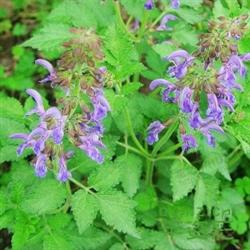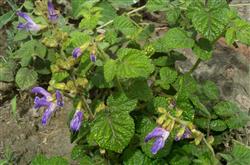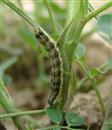How to manage planting traditional Chinese medicine Salvia miltiorrhiza?

How to manage planting traditional Chinese medicine Salvia miltiorrhiza? Please give some advice on the management of planting traditional Chinese medicine Salvia miltiorrhiza as follows: ① ploughing and weeding: generally ploughing and weeding three times, once when the seedlings are about 10 cm high in April, once before and after flowering in early June and once in late August. ② topdressing: topdressing three times in the growing period, combined with mid-tillage, weeding and irrigation, the first time when Salvia miltiorrhiza turned green, urea 5kg per 667m 2 furrow; the second time after cutting the first inflorescence, 50kg N, P and K fertilizer per 667m; the third time from August to September, foliar spraying 0.65kg of trace fertilizers such as manganese, boron, zinc and iron. ③ irrigation and drainage: from May to July is the peak growth period of Salvia miltiorrhiza, which requires a large amount of water. In case of drought, seepage irrigation or sprinkler irrigation should be discharged from the border and ditch in time, and flood irrigation should be prohibited. In case of continuous rainy weather, when water accumulates in the soil, it should be discharged in time. ④ bud picking and seedling control: when bud buds appear on the main axis and lateral branches of Salvia miltiorrhiza, bud buds should be cut off in time to promote root development. ⑤ pest control: the main diseases of Salvia miltiorrhiza are root rot, leaf spot, root knot nematode and so on. In order to control the disease of Salvia miltiorrhiza, rotation should be carried out. Salvia miltiorrhiza can not be planted for more than 2 cycles in the same plot, and it is best to rotate with Gramineae crops. During the onset period, root rot and leaf spot disease were irrigated with 1000 times of carbendazim or 70% methyl thiophanate, 250ml per plant, once every 10 days for 2 times in a row; or 70% carbendazim or 75% carbendazim was sprayed once every 10 days for 2 times in a row, paying attention to the base of the stem. The main pests of Salvia miltiorrhiza are grubs and golden needle worms. when occurring in large quantities, 50% phoxim emulsion 1000-1500 times or 90% trichlorfon 1000 times solution is used to irrigate roots, 50 ml per plant. Click to get more planting techniques of Salvia miltiorrhiza
- Prev

How should purple salvia miltiorrhiza be planted?
How should purple salvia miltiorrhiza be planted? Please introduce that purple salvia miltiorrhiza can be planted as follows: 1. Land selection and soil preparation. The main results are as follows: (1) Seedling land, land with high topography and loose soil layer. Make a high bed and apply rotten barnyard manure or compost as base fertilizer. (2) planting land, select the land species with deep soil layer, loose and fertile soil, high topography and good displacement.
- Next

What are the main pests in planting Salvia miltiorrhiza
What are the main pests of planting Salvia miltiorrhiza? Please introduce the main pest control methods of Salvia miltiorrhiza: Spodoptera litura, cotton bollworm, aphids, grubs and so on. First, the control methods of cotton bollworm. 1. Spray 25% insecticidal amidine 500 times solution at budding stage.
Related
- Fuxing push coffee new agricultural production and marketing class: lack of small-scale processing plants
- Jujube rice field leisure farm deep ploughing Yilan for five years to create a space for organic food and play
- Nongyu Farm-A trial of organic papaya for brave women with advanced technology
- Four points for attention in the prevention and control of diseases and insect pests of edible fungi
- How to add nutrient solution to Edible Fungi
- Is there any good way to control edible fungus mites?
- Open Inoculation Technology of Edible Fungi
- Is there any clever way to use fertilizer for edible fungus in winter?
- What agents are used to kill the pathogens of edible fungi in the mushroom shed?
- Rapid drying of Edible Fungi

